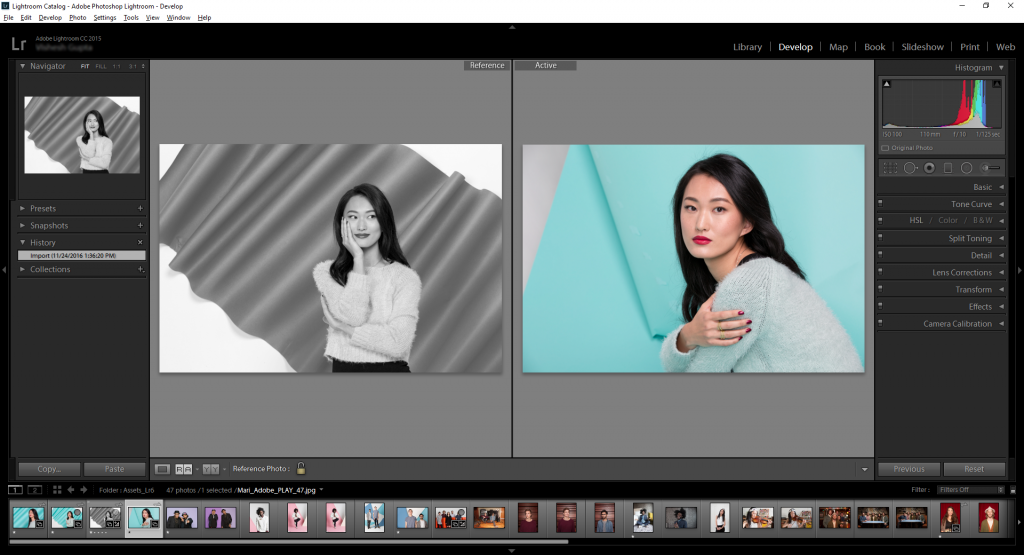

Just remember that your JPEG is an 8 bit file, which potentially gives you less editing flexibility in post-processing. While I could argue that most (but not all) in-camera-processing looks can be achieved in Lightroom, there’s nothing wrong with saving yourself this work.
Liking the look of your camera’s black-and-white or other in-camera JPEG processing, and also wanting the raw file to apply different processing to. Others that readers wrote in to share include: The predominant one for me would be if I need to be able to immediately share the photos, before having a chance to import them into Lightroom and process them. I acknowledged that there are circumstances under which capturing both file types is a perfectly good choice. Now that I have presented these file management options, I want to follow up on my last post on shooting raw+JPEG. Three Collapsed Raw+JPEG Stacks, with the Raw Files on Top and the JPEGs Underneath More on Shooting Raw+JPEG To collapse all the stacks at once, select all the photos (ctl/cmd-A), right-click inside one of the thumbnails, and choose Stacking>Collapse All Stacks. You can then choose to collapse the stacks so that you just see the raw files and the JPEGs are hidden underneath (or vice versa), or keep them expanded to see both. 
To automatically stack each of your raw and JPEG photos together, select all your raw and JPEG files ( Ctl/Cmd-A), and go to Photo>Stacking>Auto Stack by Capture Time, and set the duration to zero so you are only stacking those with the exact same capture time. The stack can be collapsed to reduce visual clutter, and expanded when you want to see and work with the individual photos. Stack the Raw and JPEG Files Together in the Same FolderĪs I mentioned in my recent post on the fundamentals of stacking photos in Lightroom, stacking can be used to link two or more photos together. Note that when you create these subfolders in Lightroom and move photos into them, you are in fact creating subfolders and moving files on your hard drive - you’re just doing it from within Lightroom.
#How to convert cr2 to jpeg in lightroom how to#
Watch my video on File and Folder Management to learn more about how to create folders, and to select and move photos. Click inside one of your image thumbnails and drag the photos into your newly created JPEG Files folder.Select all the JPEG files, with Ctl/Cmd-A, or Edit>Select All.

(Watch my video on searching for photos in Lightroom for complete details on how to do this). This will be a Metadata filter on File Type – then you will select JPEG.
 Isolate your JPEGS: Select your shoot folder, and use the Library Filter Bar to isolate the JPEGs. After you import your raw and JPEG photos into a shoot folder ( 01-15 Downtown Seattle in my case), right-click on your shoot folder in the Folders panel, and choose Create New Folder Inside…, and name it JPEG Files. Put the JPEG and Raw Files into Separate Sub-Folders within Your Shoot Folder. As I discussed in my previous post, Shooting in Raw + JPEG Mode: Why Most of Us Shouldn’t, and How to Set Lightroom Preferences If You Do, managing both in Lightroom involves setting your Lightroom preferences to treat the raw and JPEG photos as separate photos so that both are imported.Īfter I explain these tips, I will mention two more potential reasons for shooting in raw+JPEG mode, that readers wrote in about after reading my last post. My goal in this post is to give you a couple suggestions for managing your files if you choose to shoot in raw+JPEG mode, capturing both file types for every photo you take, and if you wish to include and manage them both in Lightroom.
Isolate your JPEGS: Select your shoot folder, and use the Library Filter Bar to isolate the JPEGs. After you import your raw and JPEG photos into a shoot folder ( 01-15 Downtown Seattle in my case), right-click on your shoot folder in the Folders panel, and choose Create New Folder Inside…, and name it JPEG Files. Put the JPEG and Raw Files into Separate Sub-Folders within Your Shoot Folder. As I discussed in my previous post, Shooting in Raw + JPEG Mode: Why Most of Us Shouldn’t, and How to Set Lightroom Preferences If You Do, managing both in Lightroom involves setting your Lightroom preferences to treat the raw and JPEG photos as separate photos so that both are imported.Īfter I explain these tips, I will mention two more potential reasons for shooting in raw+JPEG mode, that readers wrote in about after reading my last post. My goal in this post is to give you a couple suggestions for managing your files if you choose to shoot in raw+JPEG mode, capturing both file types for every photo you take, and if you wish to include and manage them both in Lightroom.








 0 kommentar(er)
0 kommentar(er)
